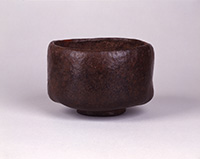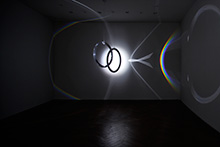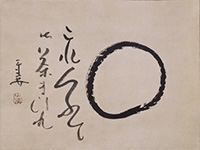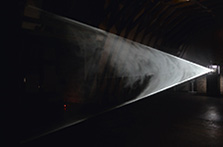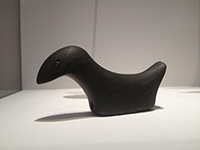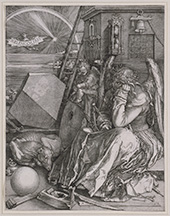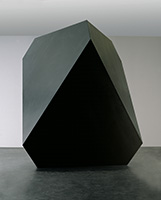
Carsten Nicolai
anti
2004
PP lightweight structure, sound module, theremin module, transducer, amplifier, light-absorbent black paint
300×255×255cm
Installation view: Schirn Kunsthalle, Frankfurt/Main, 2005
Photo: Uwe Walter
Courtesy: Galerie EIGEN + ART, Berlin / Leipzig and The Pace Gallery
Admission & Access
Open Hours
10:00-22:00 (Tuesdays: 10:00-17:00)
* April 25 [Sat] open until 6:00 the following morning due to "Roppongi Art Night 2015."
* Tuesday of 5/5 open until 22:00
* Admission until 30 minutes before closing.
* Open everyday.
Admission
Adult: ¥1,800, University / Highschool student: ¥1,200, Child (4 years to Junior highschool student): ¥600, Senior (Age 65 & over): ¥1,500
* All prices include tax.
* Ticket also valid for Tokyo City View observation deck from April 29.
* Additional entrance fee to the Sky Deck is required.
Advance Ticket Sales
Adult: ¥1,500
* Price includes tax.
Advance ticket sales period: thru Sunday, July 5, 2015
Advance Tickets available through: Ticket Pia [P-code: 766-681] (* In Japanese-language only)
Access (to Roppongi Hills)
Venue: Mori Art Museum, 53F, Roppongi Hills Mori Tower, 6-10-1 Roppongi, Minato-ku, Tokyo, Japan
- 0 mins walk from Roppongi Station on the Tokyo Metro Hibiya Line (Roppongi Hills exit)
- 4 mins walk from Roppongi Station on the Toei Oedo Line
- 5 mins walk from Azabu-Juban Station on the Toei Oedo Line
* For more details see the Roppongi Hills website.
Inquiries
Tel: +81(0)3-5777-8600 (Hello Dial)
Highlights & Works
Highlights
■ Debut Asian showing of inaugural joint Centre Pompidou-Metz / Fondation d’entreprise Hermes exhibition
Centre Pompidou-Metz opened in 2010 as a branch of Centre Pompidou in Paris. "Simple Forms" is assembled in the first collaboration with the Fondation d’ entreprise Hermès to mark four years since the opening of Centre Pompidou-Metz, which does not hold its own permanent collection, instead staging highly original special exhibitions. We have reconfigured the exhibition plan and added to the exhibition content, making the Tokyo show a unique Mori Art Museum presentation. This will also mark the first showing ever in Asia, of exhibition organized by Centre Pompidou-Metz.
■ Crammed with renowned works from the collections of some of France’s most famous art galleries and museums
"Simple Forms" will include a plethora of masterpieces from Centre Pompidou as well as the collections of premier French art museums such as the Musée Picasso, Fondation Le Corbusier, Musée des Arts et Metièrs, Musée du quai Branly and the National Museum of Natural History. Many of these works will be shown in Japan for the first time.
■ Presenting in a single exhibition "simple forms" from around the world and across the ages, in diverse genres
The exhibition will present in a single venue around 130 "simple forms" from across the globe spanning 20,000 years from prehistoric stone implements to contemporary art, and multiple genres – not only art, crafts and design but also the fields of archeology, biology, mathematics, physics and mechanical engineering.
■ Exclusive to the Japanese exhibition, famous Japanese cultural artifacts including Black Raku tea bowls by Chōjirō
As manifestations of simple and beautiful forms in the culture of Japan, the exhibition will include prominent examples from Japanese art history, including a Zen calligraphy by Sengai and buddhist sculptures by Enkū, Black Raku tea bowls bymaster ceramicist Chōjirō, and Negoro lacquerware trays from the Nigatsudo Hall at Nara’s Todaiji Temple.
■ New works created for the Mori Art Museum
“Simple Forms” will also feature new, large-scale installations making optimal use of the spacious interior of the Mori Art Museum, courtesy of French and Japanese contemporary artists including Xavier Veilhan, Emmanuel Saulnier and Ohmaki Shinji, in addition to new works by Tanaka Nobuyuki and Kuroda Taizo.
Works
|
Chōjirō |
Xavier Veilhan |
Olafur Eliasson |
|
Sengai |
Constantin Brancusi |
Anthony McCall |
|
Jean Arp |
Lucio Fontana |
Henri Matisse |
|
Anonymous |
Albrecht Dürer |
Carsten Nicolai |
Participating Artists
| Jean Arp Étienne Béothy Karl Blossfeldt Constantin Brancusi Brassaï Chōjirō Le Corbusier (as a collector) Marc Couturier Marcel Dassault Albrecht Dürer Olafur Eliasson Enkū Lucio Fontana Hashimoto Heihachi Barbara Hepworth Ike no Taiga Jean-Baptiste Romé de l'Isle Anne Veronica Janssens Thomas Jefferson (as an inventor) |
Anish Kapoor Ellsworth Kelly Koo Bohnchang Germaine Krull František Kupka Kuroda Taizo Lee Ufan Robert Mapplethorpe Étienne-Jules Marey Henri Matisse Anthony McCall John McCracken Henry Moore Carsten Nicolai Nishikawa Katsuhito Ohmaki Shinji Okada Kōyō Okazaki Kazuo Gabriel Orozco |
Charlotte Perriand Antoine Pevsner Pablo Picasso Man Ray Robert Le Ricolais Medardo Rosso Emmanuel Saulnier Sengai Sesshū José María Sicilia Carl Strüwe Sugimoto Hiroshi Tanaka Nobuyuki Wolfgang Tillmans Tsai Charwei Xavier Veilhan Not Vital * in alphabetical order of the artists' (sur)names |
Sections
Sec. 1 Metaphysical Landscapes
Seemingly useless objects such as the stones Le Corbusier picked up at the beach and the pieces of wood Charlotte Perriand photographed pose questions regarding the nature of beauty. They are simply matter, but at the same time there exists within them a curious balance in the sense that they are also forms. The curves of sculptures of Brassaï, the Mount Fuji in the photographs of Okada Kōyō and "Seascapes" by Sugimoto Hiroshi are endowed with such beauty that we never tire of looking at them. In this sense, the simple beauty of various objects and landscapes could also be said to be something we ourselves discover.
Sec. 2 Home for Solitude
Simple beauty has been revered around the world down through the ages, its serenity providing people a spiritual refuge. In this section, Xavier Veilhan will create a place for quietly contemplating the beauty of the world. Inside this space will be displayed objects from various periods that channel simple beauty—Black Raku tea bowls by Chōjirō, Negoro lacquerware trays, Buddhist sculptures by Enkū, Polynesian headrest, etc. We invite you to enter the space, sense the beauty, understand what is meant by a home for solitude.
Sec. 3 Cosmos and Moon
The moon, which humankind has gazed at since the dawn of time, was probably the first form that provided people with inspiration. The constantly changing light of the moon has given rise to countless legends, feelings of awe and fantasies. The moon’s waxing and waning symbolize energy and the vitality of life, and in Zen calligraphy ensō, or a circle painted with a single stroke, represents the entire universe. The simple forms of the moon and ensō captivate us as expressions of the invisible forces that exist in nature. Sengai’s Ensō, a Joseon Dynasty white porcelain jar and Olafur Eliasson’s installations become one with these various forces that exist in the world giving rise to harmonious forms.
Sec. 4 Mechanical Forms
Advances in science and technology from the late 19th century to the early 20th century gave rise to new simple forms and captivated artists. Captivated by the beauty of an airplane propeller, Marcel Duchamp declared, “Painting is finished. Who can do better than that propeller?” Inspired by aeromechanics, Constantin Brancusi produced sculptures that expressed the vibrancy of life using only essential lines. In this section, we present among other things the propellers that probably captivated artists at the time, sculpture by Brancusi and Tanaka Nobuyuki, and an installation by Ohmaki Shinji that expresses the flow of air.
Sec. 5 Geometric Forms
Geometrical images could be said to be expressions of physical or mathematical regularity. The principles of crystallography, which emerged as a branch of science in the 18th century, and the mathematical sciences based on modeling and analysis of the late 19th century that represented phenomenon in space-time gave rise to previously unimagined forms including crystal and mathematical models. By introducing into art abstract forms as a completely new criterion that predates abstract art, they stimulated artists. In this section, we present works by artists who were inspired by mathematical models such as Antoine Pevsner, Sugimoto Hiroshi, Kuroda Taizo, and Anthony McCall along with displays including crystal and mathematical models.
Sec. 6 Forms of Nature
At the start of the 20th century, life, the growth cycle of plants in nature and morphogenesis in plants became new themes of research in biology. Biology reached the level of cells and molecules, giving rise to icons and images never before seen by humans. Through their observation of the distinctive curving lines of these new icons and images, artists came to produce artworks inspired by germination and fluidity. In this section we focus on natural forms by presenting artworks by such artists as Jean Arp, Ellsworth Kelly, Karl Blossfeldt and Nishikawa Katsuhito.
Sec. 7 Generative Forms
The forces of fertility are often symbolized by forms associated with generation and procreation. The cosmic egg, lingam, images of pregnant females and other representations of fertility and sensuality have traditionally been worshipped as symbols of creative energy. For example, lingam, which are phallic in shape, are also symbolic of Shiva, the god of destruction and creation. The fundamental principles of fertilization and embryogenesis were not understood until the 19th century, but since ancient times artists have used these forms symbolically. In this section we present artworks reminiscent of eggs and newborns by Constantin Brancusi and expressing pregnancy by Anish Kapoor as well as lingam, tantric drawings and other generative forms.
Sec. 8 Animal and Human
In ancient civilizations there existed many extremely simple representations related to the human body, such as Cycladic heads and the silhouettes of predynastic Egypt. These pure forms were rediscovered during archeological digs in the 19th century and immediately captivated artists. The same thing occurred with representations of animals, in response to which some artists chose not to try to recreate these forms in detail but to depict life brimming with vigor using silhouettes alone. In this section we present various human and animal forms ranging from Cycladic heads, ancient Egyptian cosmetic palette in the shape of fish and Native American bird stones and banner stones to Pablo Picasso’s renditions of bulls, Japanese kawari kabuto (spectacular helmet), depictions of the human body by Medardo Rosso and Henri Matisse, and Not Vital’s giant heads.
Sec. 9 Enigma
“Simple forms” seem to harbor secrets beyond our comprehension. We project onto them an enigma—a symbol of some kind or a message that needs deciphering. The black monolith that appears in Stanley Kubrick’s 2001: A Space Odyssey, for example, invites us to indulge in reveries all the more because of its inorganic surface. The polyhedron in Albrecht Dürer's Melencolia I as well as the black polyhedral work by Carsten Nicolai inspired by it also seem to harbor mysteries relating to monoliths. And the mysterious elongated glass of objects of Emmanuel Saulnier express the transience of existence. Perhaps, the thing hidden inside these mysterious forms is the enigma of humans continuously searching for their own origins. In this sense, they could be a metaphor for the place where everything begins, or for all manner of forms in the world.

